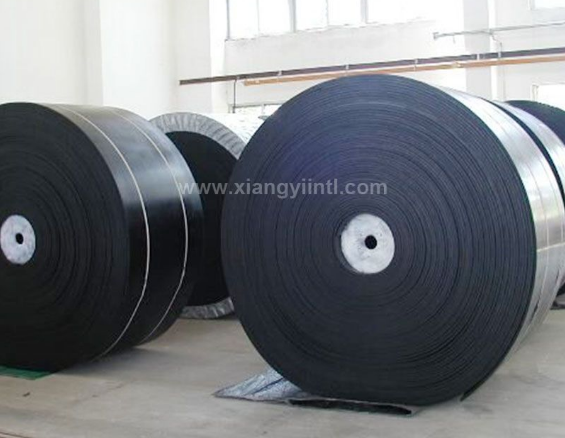Conveyor Belts: What Is It? How Does It Work? Parts, Uses
A conveyor belt is a looped belt that is driven by and wrapped around one or more pulleys. It is powered by an electric motor and supported by a metal plate bed or rollers upon which the conveyor belt rests.
What is a Conveyor Belt?
A conveyor belt is a looped belt that is driven by and wrapped around one or more pulleys. It is powered by an electric motor and supported by a metal plate bed or rollers upon which the conveyor belt rests. The pulley that powers a conveyor belt is referred to as the drive pulley and has an unpowered idler pulley.
How Is a Conveyor Belt Typically Used?
A conveyor belt’s function is to move objects from Point A to Point B with minimal effort. The rapid tests pace, direction, curvature and size varies based on the needs of the user. In some industries, a conveyor belt brings products through a manufacturing or packaging line and back out again.

Parts of the Conveyor Belt System
While there are various types of conveyor systems, they all share the common purpose of material transportation. Some applications may opt for systems without belts, utilizing only rollers or wheels for flexibility in movement. However, many conveyor systems rely on a framework with a belt and possible support rollers to efficiently transport materials and products.
Conveyor systems typically consist of three main components — the aluminum profile, the driving unit, and the extremity unit.
In a conveyor belt system, the aluminum profile comprises the frame, belt, and any necessary supports. Systems utilizing a belt are usually motorized, though conveyor systems can also operate using gravity or manual force. Motorized conveyor belts, being more reliable and efficient, are ideal for industrial use. The driving unit for such systems includes the motor bracket, electrical drive, and any counter bearings.
The extremity unit of the conveyor belt system usually includes pulleys and clamping straps. Additional stands or lateral guides may be required for specific variations or functions, so it's essential to consider your industry's needs when selecting these optional add-ons.
Key components and functions of a new conveyor belt system may include:
- The frame: Provides the framework for safe and secure operation, holding all moving parts together.
- The belt: A durable material stretched between rollers for transporting materials.
- Conveyor belt support: Rollers assist in keeping the belt on track and maintaining movement, preventing sagging and ensuring object stability.
- The driving unit: Motors, powered by variable or constant speed-reduction gears, propel the conveyor belt, enabling continuous running, smooth reversing, and directional adjustments.
- The pulleys: Strategically positioned pulleys control the belt's movement, performing functions such as driving, redirecting, turning, tensioning, and tracking.
- Clamping straps: Used to secure fixtures and work components on various machines.
- Add-on modules: These additional parts provide reinforcement, with rollers supporting the belt internally and stands and lateral guides supporting the outer framework.
Conveyor belting can be made from various materials, including rubber, metal, leather, fabric, and plastic. Consider operating conditions to ensure the chosen belting material is appropriately thick and strong enough for the task.
Conveyor Belt Uses and Applications
Lightweight and heavyweight belting find a multitude of applications across various industries and settings. Whether for light-duty or heavy-duty tasks, conveyor belt systems demonstrate remarkable efficiency, productivity, and labor impact.
Uses of Conveyor Belts:
Conveyor systems serve diverse purposes, including:
- Swift and reliable transportation of large quantities of materials.
- Stacking materials efficiently at the end of a transportation line.
- Streamlining the process of moving items from Point A to Point B.
- Providing versatile vertical or horizontal movement of products.
Advantages of Conveyor Belt Systems:
Employing a conveyor belt system offers numerous advantages, such as:
- Drastically reducing labor requirements while significantly enhancing productivity and time efficiency.
- Shielding workers from potential injuries resulting from carrying heavy loads manually.
- Safeguarding products from damage during transportation.
- Facilitating easy product transfer onto different routes.
- Enjoying the simplicity of maintenance for this durable, long-lasting system.
Conveyor Belt Applications
Conveyor systems are integral to numerous industries, spanning air travel, mining, manufacturing, pharmaceuticals, food processing, and more.
In airports, conveyor belts efficiently process, sort, load, and unload passenger luggage. The baggage carousel exemplifies a practical use of industrial conveyor belts, where luggage is securely loaded onto the belt in a designated area and swiftly delivered to the terminal for passenger access. The belt continually cycles through the loading area and returns to the baggage reclaim section for efficient delivery.
In the pharmaceutical industry, conveyor belt systems facilitate the transportation of cardboard boxes or pallets filled with medical supplies before and after packaging and distribution. In manufacturing and mining, conveyor belts handle vast quantities of materials through tunnels, across roads, and up steep slopes, necessitating durable belting material and effective support rollers.
Food processing relies heavily on conveyor belts, where products undergo various stages of production. Items are spread, stamped, rolled, glazed, fried, sliced, and powdered while traveling on the belt. Conveyor belts significantly reduce the labor hours required to move each food item through the production process individually, enabling mass quantities of goods to move seamlessly from start to finish while maintaining consistent high quality.
Each industry has specific requirements for conveyor belt types. Whether in shipyards, power plants, bakeries, or ice cream plants, the conveyor belt remains the preferred utility due to its simplicity and reliability.
